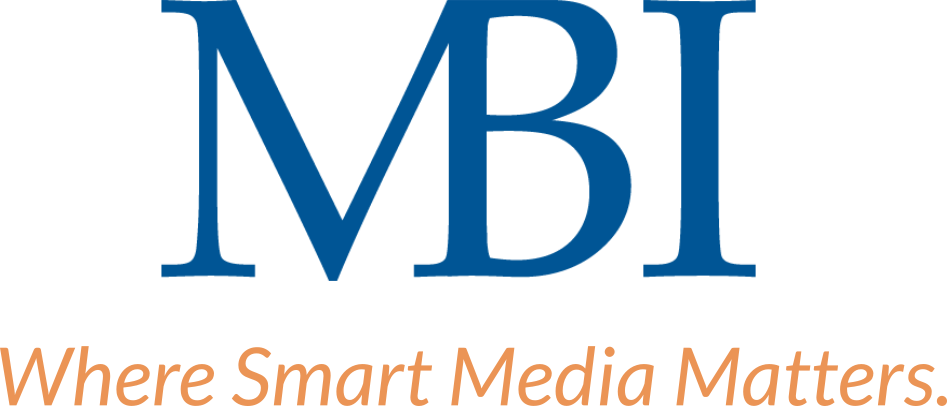In a recent article, marketing giant HubSpot shared that an astonishing 99 percent of marketers rave about the power of personalization, stating that it helps advance customer relationships. If that isn’t enough of a ringing endorsement, 78 percent of these same marketers shared that personalization provides a “strong” or “extremely strong” impact for the brands who opt for customized media strategy.
Personalized advertising — also known as “customized advertising” and formerly as interest-based advertising — is a powerful marketing tool that is known to improve advertising relevance for users while increasing the return on investment (ROI) for advertisers.
When brands combine consumer data with advertising technology, they can deliver individualized messaging, experiences and products in more innovative ways than ever before.
Personalization employs online user data and machine learning technology to target users with more relevant advertising content, providing an improved customer experience—not to mention better results for the brands that use it.
The Psychology of Personalized Advertising
In the 1950s, cognitive scientists coined a new phrase in an attempt to understand what people focus on—and why they focus on these things. They named it the “Cocktail Party Effect,” because they researched what goes on in a noisy room and discovered that the human brain separates overlapping conversations into different auditory streams. From here, the brain chooses to ignore which information is relevant and worthy of its focus, and what isn’t.
The discovery? People focus on information that is relevant to them. They also tune in more when they hear their own name. It’s all about the ability to “differentiate at a human scale.” Consumers will pay more attention when they see ads that are relevant to their interests.
However, as shared on Medium, this doesn’t mean bombarding consumers with their first names, then delivering impersonal ads that don’t appeal to their needs or interests. It must go deeper than that. Effective personalization is about developing an in-depth understanding of your customer’s journey. From there, you can share the right message at the right time in their buying journey and improve the results of your ad campaigns.
Brands Making It Personal
Today, brands that take on a personalized advertising strategy have a wealth of tools and tactics at their disposal. This includes technologies like data-driven algorithms, distinct experiences for mobile versus web experiences, CRM tools, artificial intelligence and machine learning. They can also access tools like hyper-segmentation and behavioral trigger emails to provide custom, one-of-a-kind advertising to suit the needs and preferences of each customer.
Currently, this approach is happening most often in the eCommerce space, where individualized content is tailored for the exact preferences of each consumer. Take a look at how these major brands effectively executed personalization tactics:
- Coca-Cola’s “Share a Coke” campaign, celebrating the power of the first name in a playful, fun way.
- Personalized subscription boxes with personalized recommendations like Birchbox, Fabletics, Nordstrom’s Trunk Club, FabFitFun, Vinebox and more.
- Spotify’s very popular “Wrapped” experience reviews users’ favorite artists, songs, genres, etc.
- The data-driven user-specific homepages that Netflix generates by tracking and algorithms.
- The Shutterfly mobile app will automatically identify pictures with faces on them and place them on items that you can buy (after you’ve granted permissions and created an account).
- Snapchat’s Bitmoji (or cartoon) version of yourself that you can customize on the Bitmoji app and can feature on your Snapchat profile.
Here are a few quick facts that reveal the power of personalized ads:
Tackling Data Skepticism
Customers understand that to receive personalized content and relevant promotions, marketers and retailers need to acquire some first-party data. Think of it as mutualism: the symbiotic relationship where both parties benefit from each other. In this case, consumers benefit by receiving a better customer experience. The business benefits from the revenue and loyalty that consumers give.
The truth? Consumers don’t dislike ads. They resent the intrusion and possible misuse of their personal information. With the increase in identity thefts, data misuse and other cybercrimes, consumers are understandably skeptical of where and how their sensitive information will be used. This is why Apple’s newest updates to their operating systems make it easy for consumers to avoid being tracked. Even if they enjoy personalization, not every consumer enjoys highly-targeted banner ads based on their search history or unsolicited texts with their name included.
To address this, many companies have created policy standards regarding personalized advertising and what data advertisers can and cannot acquire. For example, Google’s advertising policies are clearly stated and easily accessible for anyone to view. The policies are outlined on everything from data collection and use to policy principles and prohibited categories. Consumers need to understand your business’s privacy guidelines.
After all, consumers appreciate the convenience and experience that comes with personalized advertising — but not if it costs their privacy. When does media personalization backfire?
- When consumers feel their privacy has been violated.
- When marketers use personalization to manipulate consumers in some way.
- When personalized media relies on stereotypes or unfair assumptions about factors like gender, race, age or weight.
- When customized media shares information consumers already know.
- When personalized ads don’t make a very compelling argument.
We put together a few tips for marketers to practice when executing effective and trustworthy personalized advertising:
Understanding customer concerns and learning ways to make them feel more comfortable about their data will not only build trust and loyalty, but will boost engagement, conversions and revenue for your brand.
How MBI Can Help
Media personalization can take on many forms, but it’s definitely important to connect with consumers. Salesforce shared that 66 percent of consumers expect brands to understand their expectations and needs. It could be as simple as an automated retargeting ad on a social media platform or could connect with consumers through hyperlocal marketing tactics.
Regardless of what avenues you choose, personalization can be an invaluable tool to connect with your target audience.
At MBI, we help a variety of businesses develop smart digital media and personalized advertising strategies with an unbeatable price for guaranteed success. To get started on your next campaign, connect with an MBI media strategist today!

